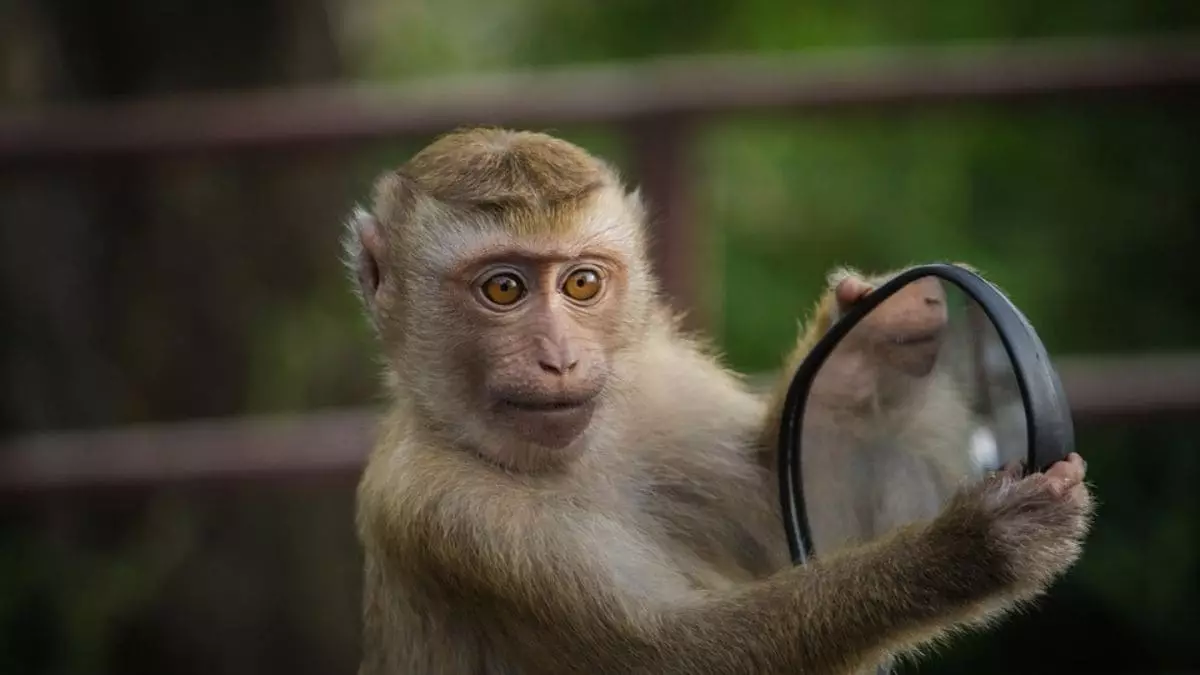Self-awareness is a complex and multifaceted trait often associated with higher cognitive abilities in the animal kingdom. Traditionally, reflective self-recognition has been regarded as a hallmark of self-awareness, yet the extent to which various species exhibit this trait remains a pertinent question in the fields of psychology and evolutionary anthropology. Recent studies on chacma baboons in Namibia offer intriguing insights into this discourse, providing an opportunity to reconsider the parameters of self-awareness and its implications for non-human primates.
The Research Context: Baboons and Mirrors
Conducted over five months in Tsaobis Nature Park, Namibia, a compelling study set out to evaluate the self-recognition abilities of chacma baboons (Papio ursinus). Researchers established large mirrors by water holes routinely visited by two troops of baboons, aiming to discern whether the primates could associate their reflections with their own bodies. This exploration followed the established practice of using mirrors to gauge self-recognition—a method previously employed with a range of other species, including chimpanzees and dolphins. However, unlike these species, the baboons displayed a puzzling inability to recognize themselves, leading to deeper questions about the nature and development of self-awareness in animals.
The Experiment: Methodology and Findings
The experimental design involved projecting a laser dot onto the baboons’ cheeks or ears while they examined their reflections. When researchers assessed their reactions, a notable discrepancy emerged: 64% of baboons touched the dot when it appeared on their arms or legs, yet a mere 2% exhibited a similar response to dots projected onto their faces. This raises compelling questions about the cognitive processes at play—while the baboons seemed to respond to stimuli on visible body parts, they instinctively failed to connect the laser mark to their reflections.
Interestingly, some baboons appeared aware of the marks on their faces without reacting. This observation signifies a profound distinction between self-recognition and self-awareness, indicating that while these primates have some level of sensory awareness, it does not extend to the recognition of themselves in a mirror. Such findings align with existing literature suggesting that non-ape primates generally display limited capacity for self-recognition.
The implications of these findings contribute to the ongoing debate about the nature of self-awareness in animals—whether it is innate or acquired through experience. Evolutionary anthropologist Alecia Carter emphasizes that self-awareness is a complex concept, difficult to assess definitively in animals. The classical mark test, a popular method for gauging self-recognition, has shown mixed success among varying species; thus, it raises questions about its applicability as a universal metric for self-awareness.
Further complicating this discourse is the notion that self-awareness exists on a continuum, rather than as a binary trait, as noted by psychologist Lindsay Murray. This perspective highlights the gradations of self-awareness observed in both humans and animals, suggesting that developmental stages and environmental factors significantly influence this trait. For instance, self-awareness in human children generally evolves over time, with a substantial portion passing the mirror test only by the age of two.
Oddly enough, the necessity of self-recognition for survival is called into question by Carter’s observations regarding baboons. In their natural habitat, these primates successfully navigate their environment without the compulsive need to recognize their reflections. This prompts a reevaluation of self-awareness as a survival trait: rather than being inherently beneficial, it may simply be an enriching cognitive feature that does not play a direct role in the ongoing complexities of predation, social interaction, and environmental adaptation.
The examination of self-recognition in wild baboons presents a fascinating yet challenging perspective on the broader nature of self-awareness across species. The experiments conducted highlight the limitations of equating self-recognition with self-awareness and invite a reconsideration of how we define and understand these cognitive traits in the animal kingdom. While the conclusions drawn from this study do not diminish the cognitive capacities of baboons, they underscore the complexity of consciousness and self-awareness, painting a broader picture of the evolutionary trajectories that shape the lives of non-human primates.

Leave a Reply